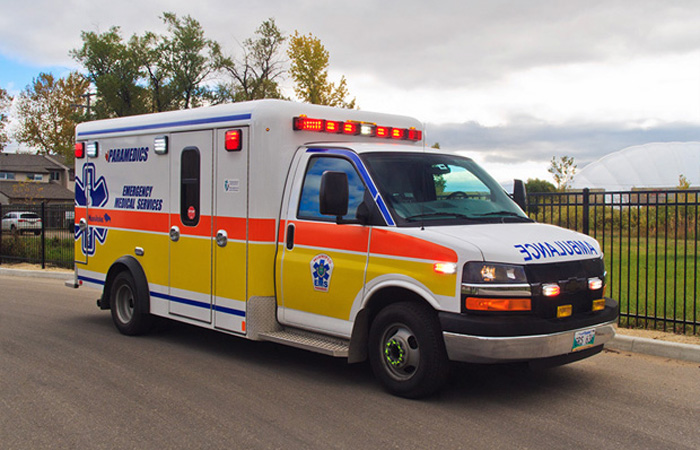The Manitoba government will purchase 65 replacement ambulances as part of efforts to modernize its fleet while supporting paramedics in responding rapidly and effectively to medical emergencies across the province.
“Every day, paramedics take life-saving care directly to hundreds of patients, responding to 911 calls as well as transporting patients to and between hospitals and other care facilities,” said Health, Seniors and Active Living Minister Cameron Friesen. “This significant investment will ensure our paramedics continue to have the right equipment to support the excellent care they provide to Manitobans.”
The minister noted this investment builds upon the work underway to implement recommendations of the 2013 EMS System Review. This includes a $5 million annual investment in 60 full-time paramedic positions throughout rural Manitoba, to reduce Manitoba’s reliance on on-call staffing. These new full-time positions, 35 of which have been filled, will ensure ambulances are staffed 24 hours a day, seven days a week.
Additional investments have been made in capital projects that support the delivery of consistent, quality emergency medical services, including the construction of new EMS stations in Snow Lake and Lynn Lake and new crew quarters for the Kinosota Trails station in Sandy Bay.
“Recommendations of the 2013 EMS System Review, which included significant consultation with front-line care providers, are guiding our investments,” said Friesen. “Our approach is focused on implementing changes gradually. This includes the creation of a consistent, integrated EMS and patient transport model as part of Manitoba’s broader health system transformation. These efforts will first build capacity, equip staff and invest in skilled professionals across the province.”
The restructuring of station locations recommended in the review will not occur until the EMS and patient transport model is in place, the minister added.
The tender sets out the specifications for the new ambulances, including requirements for construction, materials and workmanship. In addition, the tender requests that vendors submit proposals for a suspension system that enhances ride quality.
Once the tender is awarded, the successful vendor will begin building. It is anticipated that the new ambulances will be delivered and placed in all five health regions later this year.
Estimated costs are not being released at this time to ensure the tendering process is not affected.




